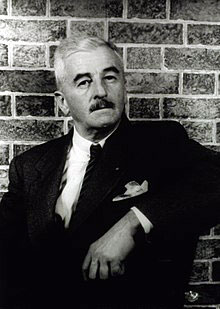The film Intruder in the Dust (1949) adapted from a novel by William Faulkner, is set in rural Mississippi in the 1940s. Lucas Beauchamp, a local black man, is found standing over the body of a dead white man, holding a pistol that has recently been fired. When he is arrested for murder and jailed, Beauchamp insists he's innocent and asks the town's most prominent lawyer to defend him. As the story develops, its major theme is one that has become prominent and controversial in American society at the present time: white supremacy. Behind the film is an interesting backstory that explains the relevance of Faulkner’s story to our time.

Why did a leading American writer feel compelled to work in the film industry? The reason was his belief in the traditional Southern family code, which made him, as an eldest son, accept responsibility for supporting not only his own wife and children but also his widowed mother and the widow and small child of a deceased younger brother. His father’s death in 1932 placed William Faulkner in the role of breadwinner for the extended family during the Depression era when his earnings from his published work were modest.
Although Faulkner had no experience in film work, the salary of $500 a week for working on screenplays was just too good to pass up. Initially, he struggled and didn’t succeed, but when he began working with Howard Hawks, the director of To Have and Have Not, the writer found a kindred spirit and they went on to collaborate on several successful film adaptations.
It was while they worked on adapting The Big Sleep, Raymond Chandler’s tough detective story, that Hawks suggested Faulkner could write something similar. About four years later, the writer published Intruder in the Dust, and Clarence Brown, one of the Metro-Goldwyn-Mayer studio’s senior directors, promptly persuaded the front office to pay the novelist $50,000 for the right to make a movie from it.
That sum was far more than Faulkner had been paid for all of his screenplay writing (he’d contributed to a total of 60 projects, but only received screen credit for six), and he didn’t even have to do the work of adapting Intruder into a screenplay. He’d figured out how to write a riveting mystery story, and the underlying theme was a critique of the White Supremacy belief that was just as much a part of the Southern code as the family responsibility ethic that had driven him to take a job in Hollywood fifteen years earlier.
The latent belief in White Supremacy has resurfaced in our culture recently, in the form of some white people taking it upon themselves to disrespect people of color in various ways. If you’re interested in seeing an outstanding mystery film that will show how a proud Black man stood up to White privilege in the 1940s South, come to the Classic Movie screening and discussion at 6:00 p.m. on Wednesday, August 8, at Covenant Community Center, 322 W. Pecan in Sherman. I’ll be leading the discussion after the movie.
